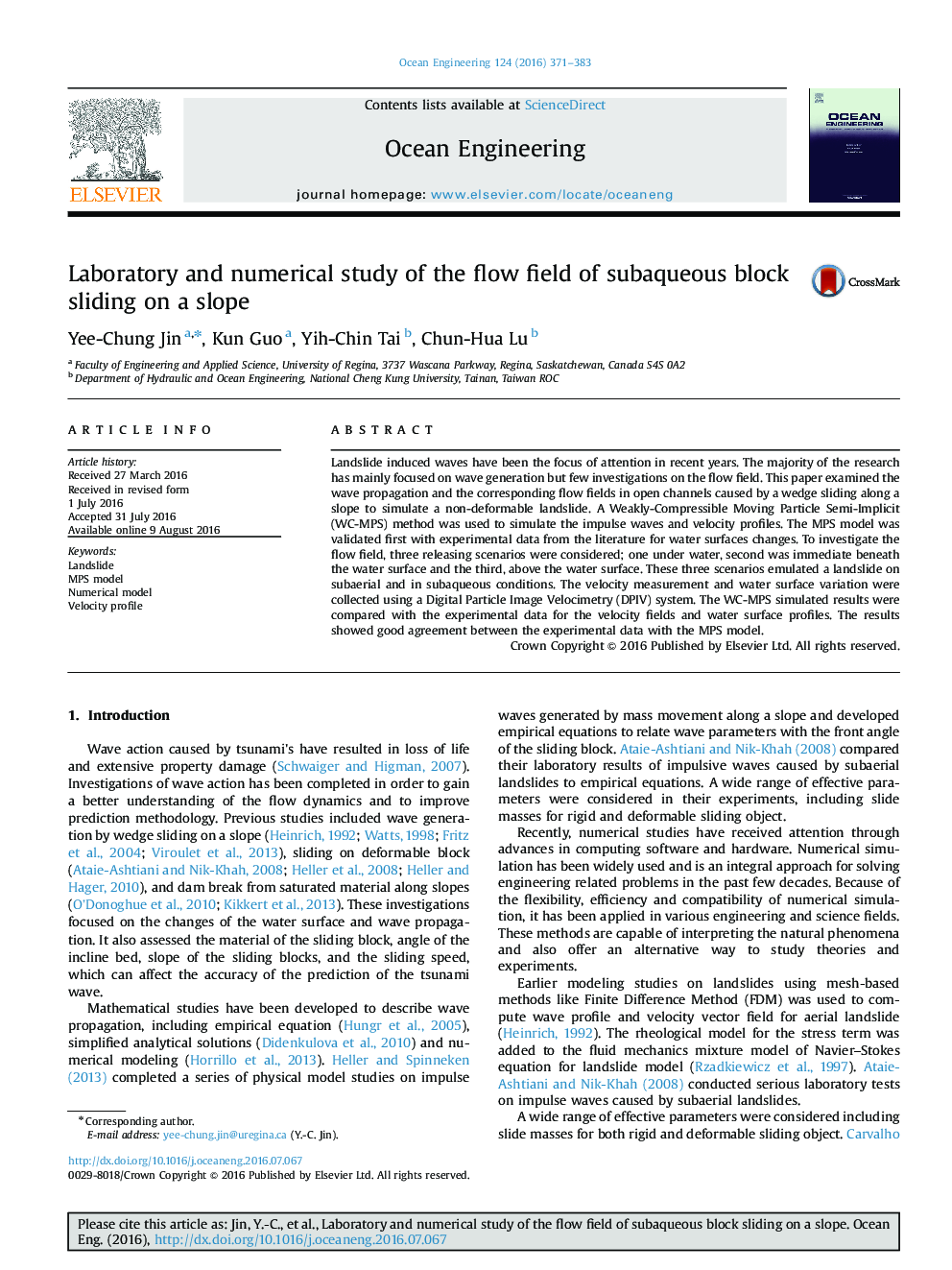| Article ID | Journal | Published Year | Pages | File Type |
|---|---|---|---|---|
| 1724980 | Ocean Engineering | 2016 | 13 Pages |
•Use a meshfree MPS method to simulate subaerial landslide.•Experiments under submerged and unsubmerged initial conditions of sliding block.•The experimental data were collected using a Digital Particle Image Velocimetry.•Flow field surround the sliding block are compared with simulation.•Both flow field and impulse waves are simulated well.
Landslide induced waves have been the focus of attention in recent years. The majority of the research has mainly focused on wave generation but few investigations on the flow field. This paper examined the wave propagation and the corresponding flow fields in open channels caused by a wedge sliding along a slope to simulate a non-deformable landslide. A Weakly-Compressible Moving Particle Semi-Implicit (WC-MPS) method was used to simulate the impulse waves and velocity profiles. The MPS model was validated first with experimental data from the literature for water surfaces changes. To investigate the flow field, three releasing scenarios were considered; one under water, second was immediate beneath the water surface and the third, above the water surface. These three scenarios emulated a landslide on subaerial and in subaqueous conditions. The velocity measurement and water surface variation were collected using a Digital Particle Image Velocimetry (DPIV) system. The WC-MPS simulated results were compared with the experimental data for the velocity fields and water surface profiles. The results showed good agreement between the experimental data with the MPS model.
